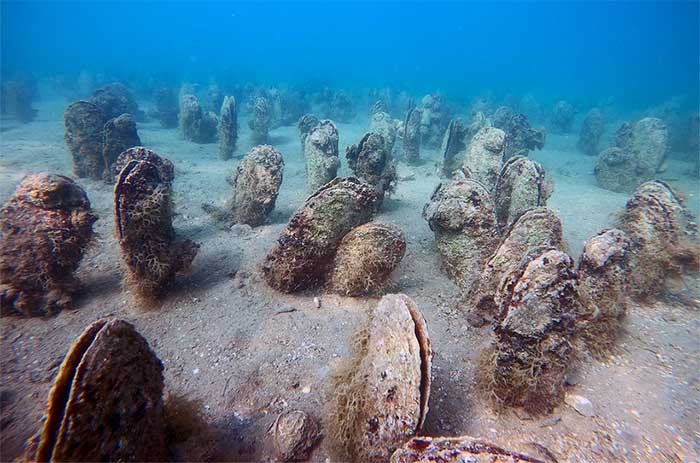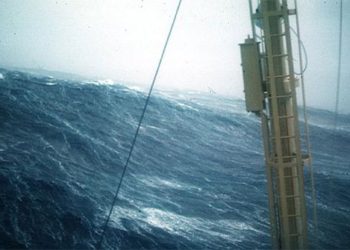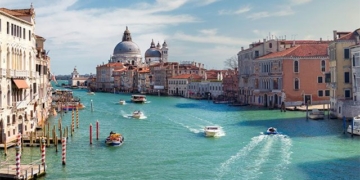A type of parasite nearly wiped out the giant Mediterranean clam Pinna nobilis in 2016. However, recently, Croatia has discovered that this species is regenerating and is making efforts to preserve them.
Marine biologists report that a giant clam species once thought to be extinct has recently reappeared in the waters off Croatia, with a significant increase in numbers.

Giant clam in the Mediterranean Sea. (Photo: Alamy Stock)
This clam, which can grow up to 1.2 meters long and is known as Pinna nobilis, also referred to as the “noble pen shell” or “fan shell,” began to decline rapidly due to an outbreak of a parasite spreading in the Mediterranean Sea in 2016.
This parasite causes clams to die of starvation quickly. The pathogen nearly wiped out the Pinna nobilis population off the coast of Spain before spreading to other coastal areas.
Croatian scientists report that the number of Pinna nobilis clams has dramatically decreased across the region, with only about 10 individuals remaining in the Adriatic Sea off Croatia until recently.
However, last year, a diver discovered about 20 individuals of Pinna nobilis near the northern coast of the Istrian Peninsula.
Expert Sandro Dujmovic from the Natura Histrica organization, which manages the nature reserves in Istria, stated that scientists were quite surprised by this information.
According to him, it is currently unclear why Pinna nobilis is reappearing, but “this is a sign that they are still reproducing.”
Since the beginning of the year, biologists have collected about 100 Pinna nobilis clams and brought them to an aquarium in the city of Pula in the Adriatic.
There, they are nurtured in clean water, free from parasites, enhancing their resistance and survival ability before being returned to the wild.
Experts say the Croatian government has decided to increase funding for research on the conservation of this species.
The Pinna nobilis clam can live for 45 to 50 years and reaches up to 1.2 meters in length when mature. This species is only found in the Mediterranean Sea, standing upright like boats, with their pointed heads anchored in sandy meadows by shimmering golden threads.
With its wing-shaped shell lined with iridescent nacre and its production of rare, pure byssus threads, Pinna nobilis is one of the most distinctive symbols of the Mediterranean region.

Pinna nobilis plays an important role in the marine ecosystem. (Photo: Skaphandrus).
In ancient times, the byssus threads produced by Pinna nobilis were harvested by the Phoenicians of the Mediterranean to weave luxurious garments. Artisans also used the nacre shell of Pinna nobilis to carve expensive buttons.
Some believe that the rare byssus harvested from the sea may have inspired the legend of the Golden Fleece sought by Jason in Greek mythology.
Pinna nobilis is also considered an indicator of ocean health, as their shells record the chemical and physical changes in their surrounding waters.
They play a crucial role in the marine ecosystem by filtering ocean water, providing a clean living environment for other species.
However, this second-largest mollusk in the world is on the brink of extinction and is listed as a species needing urgent protection.





















































